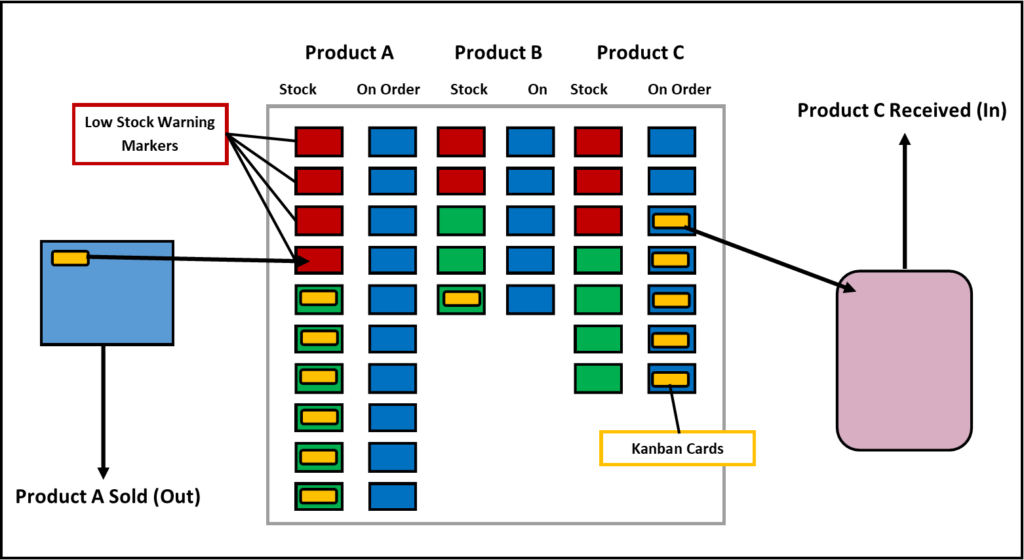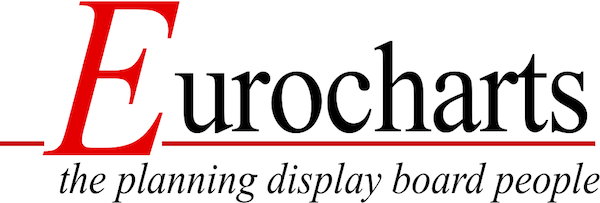Eurocharts Blog
Understanding Card Kanban – A simple Explanation & Example
What Is Card Kanban – In a few sentences
Card Kanban is a production planning system that uses cards or tags to signal demand for a particular item or product. The cards are physically moved between different stations or processes to signal the need for production or replenishment of inventory.
What Is Card Kanban – In a few more sentences
The Card Kanban method is a popular technique for implementing just in time (JIT) production planning in manufacturing and other industries. JIT production planning is a method of manufacturing that aims to minimize waste and improve efficiency by producing goods only when they are needed. The Card Kanban method uses physical cards or other visual signals, such as job order paperwork, to manage the flow of materials and information throughout the production process.
The Card Kanban method is extremely flexible, with numerous applications and limitless ways of utilising the principle. The core components of a Kanban system are the Kanban Card and a form of Kanban Board, which is a column-based system capable of storing and displaying the Kanban cards. A Kanban card can represent numerous functions, such as a process, a certain quantity of goods, a purchase order, or a consumable product. For example, you might use one type of card to signal when a part or component is needed, and another type of card to signal when a finished product is ready to be shipped.
Card Kanban can be utilised for simple stock management, production plans or for complex process management. The key is designing and running the system with a methodology that is most beneficial to the way your business operates. Systems can use single cards to visualise one aspect of a process, or more complex applications can use multiple cards and transfer cards to control the flow through a multiple stage process.
The Card Kanban Principle
Card Kanban at its core is a closed loop feedback system that self regulates each stage of a process by one stage puling on another, ensuing that each stage always has an adequate amount of material/work available. This avoids unwanted costs by preventing the accumulation of excess material/work in the system whilst eliminating delays by ensuing a continuous delivery of material/work to every process stage.
Explained simply, in a process with 3 consecutive stages named A, B and C, the consumption of stage C products will automatically identify the need for increased stage B production such that the C stock can be replenished. This in turn will stimulate stage A, such that stage B has the required material available to satiate the demand of stage C. However, the process will only increase A and B activity such that just enough stage C product is manufactured/delivered to replace the originally consumed product, thus maintaining the ideal “Buffer Stock”. The companies ideal Buffer Stock is represented and maintained by each stage having a fixed number of Kanban cards, which represents the maximum amount of inventory that can be produced at that stage. A minimum stock level threshold is visualised on the Kanban board, which when crossed is the trigger to stimulate the process to replenish the components of the required stage.
A Basic Application Example- How to establish a Card Kanban System
Let’s design a simple Card Kanban system for a business that sells three products: A, B and C. Each product is delivered from a supplier and stored and dispatched from the business location.

Step 1: Determine the lead time from each supplier and establish the minimum stock level of each product, such that no product is out of stock whilst awaiting delivery from the supplier. (This is a flexible step and will need to be fine tuned as the business operates)
Step 2: Determine the maximum stock level of each product and establish a number of Kanban Cards equal to the maximum stock level for each item. Do not produce more cards than this, as the number of cards regulates the maximum stock in a closed Kanban loop. Note that a single Kanban Card can be used to represent a specified number of products. For example, one Kanban Card could be assigned to represent one outer container of products, where each container consists of multiples of the product. The Kanban Card should detail the product type, supplier, and the number of products it represents. Some companies simply make the Kanban Card a purchase order form.
Step 3: Design your Kanban Board. For this business, we will have two columns per product. The first column will represent the stock of the Item, and the second column will signify when the replacement item has been ordered from the supplier.
- Product A has a maximum stock level of 10 outer containers and must be replenished when the current stock is 3
- Product B has a maximum stock level of 5 outer containers and must be replenished when the current stock is 1
- Product C has a maximum stock level of 7 units and must be replenished when the current stock is 2
In this example the company currently have maximum stock of each product, and every product has the associated Kanban Card attached to it or to the larger outer container (Other methods store the cards in a differently formatted Kanban Board)
Step 4 – Operation: Each time enough of item A or B have been sold such that the outer container is empty, the Kanban card is placed in the first product column on the Kanban Board. The same applies for each single unit of Item C sold.
When 7, 4 or 5 Kanban Cards are in the first column of product A, B or C respectively (corresponding to the pre-established minimum stock thresholds), this identifies that purchase orders need to be raised.
Once the purchase orders corresponding to the Kanban Cards in the board have been raised, each card can be moved in to the second product column, identifying that the items have been ordered.
As the new items are delivered, the corresponding Kanban Card can be removed from the second column and re-attached to the consumable stock product completing the loop.
Summary
This is a simple stock control application of Card Kanban, but multi-stage production processes can be maintained with the same basic principle, by simply having columns for each production stage on the Kanban board, and by determining what each Kanban Card represents at each phase of the process. The flow of a Kanban Card from production stage to production stage immediately visualises the current state of the entire production process. With each stage having just enough available materials at just the right time

